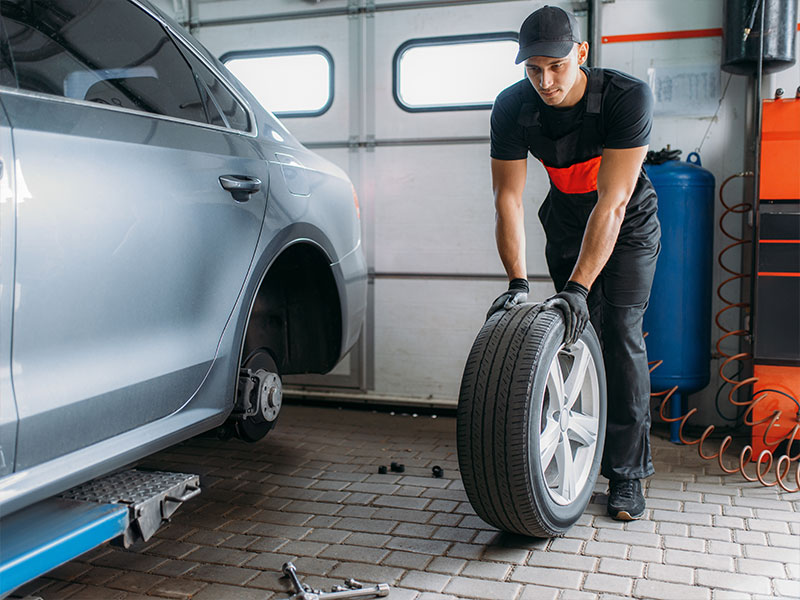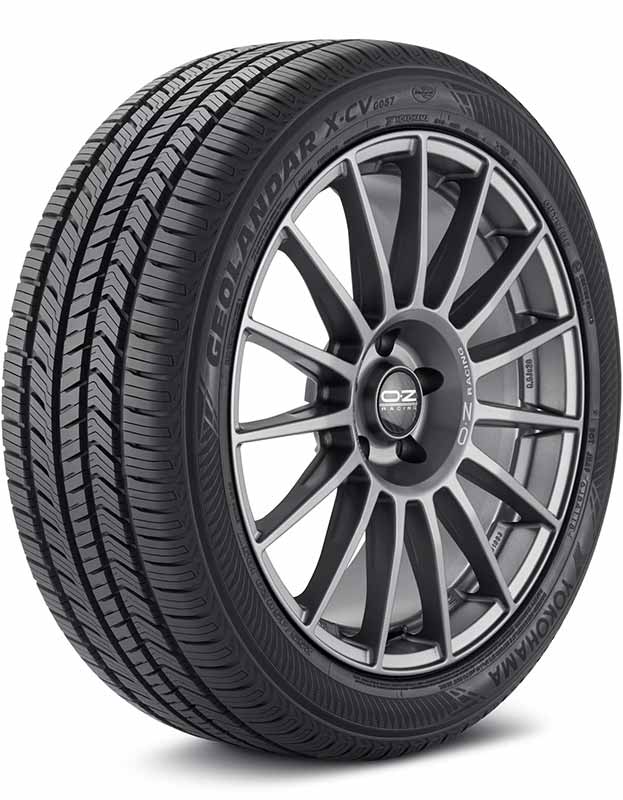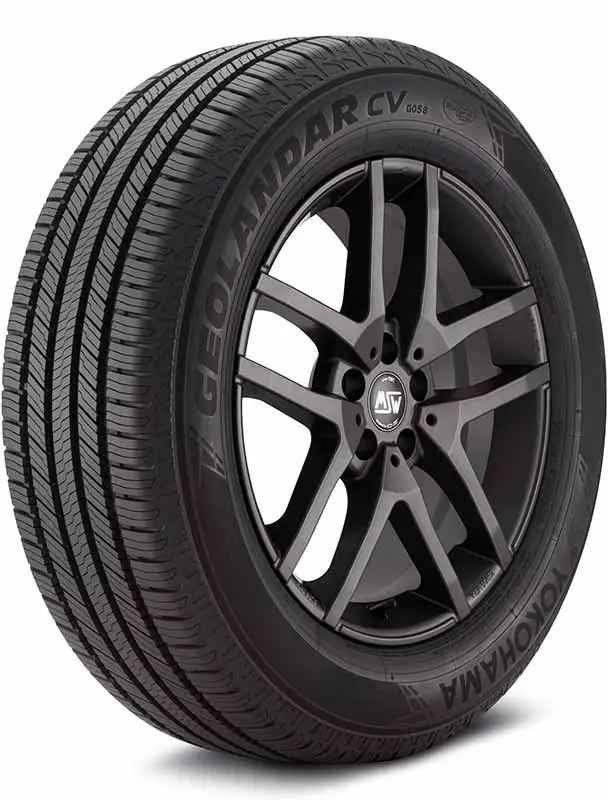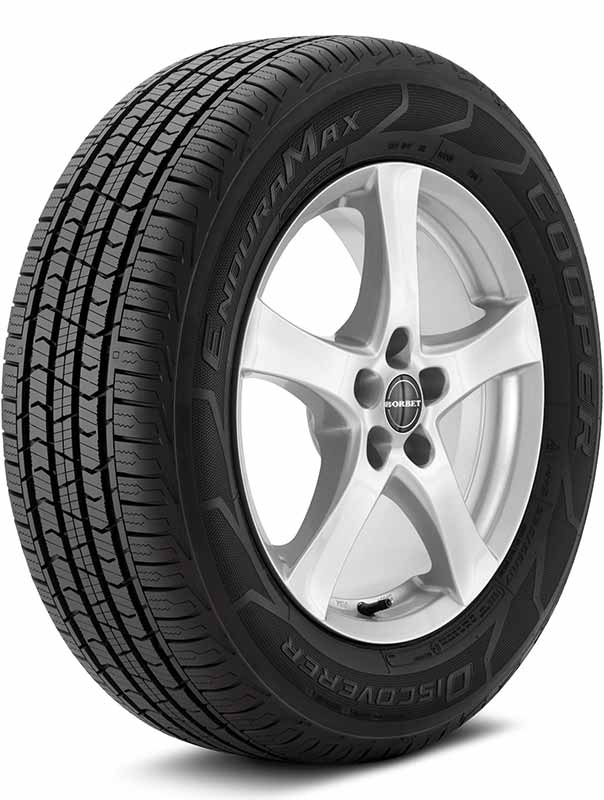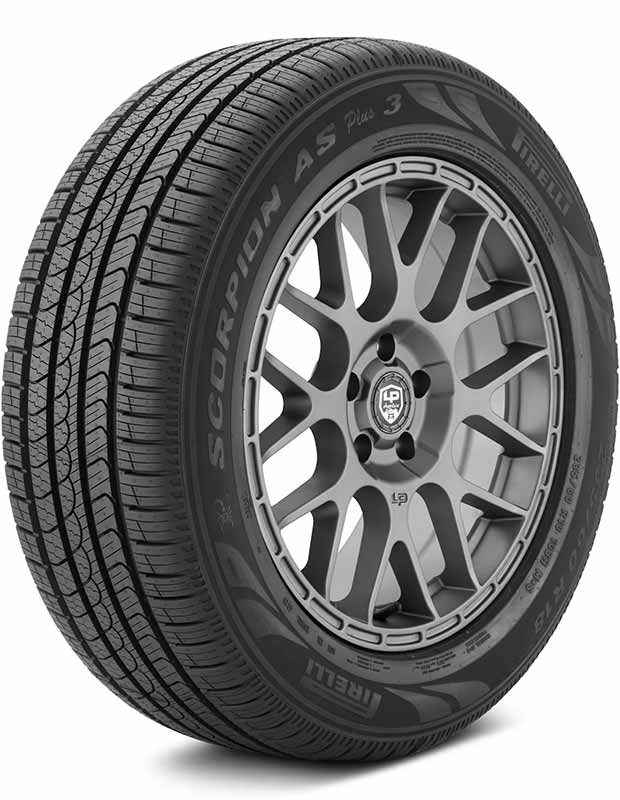Tire rotation patterns can seem confusing, but they are actually fairly simple once you understand what’s going on and how they work.
Let’s dive into the details of rotating tires.
Tire Rotation Patterns
The 3 most common tire rotation patterns for passenger cars and trucks are the forward cross pattern, rearward cross pattern, and the X-pattern.
More unique tire rotation patterns are available for inclusion of a full size spare tire, staggered wheel sets, directional tires, and dually trucks.
Forward Cross Pattern
The forward cross pattern rotates the rear tires forward and across to the opposite sides of the vehicle. The front tires rotate to the rear but do not cross sides and stay on the same sides of the vehicle.
The forward cross tire rotation pattern is ideal for front wheel drive vehicles because it takes the rear tires which wear more slowly and evenly on front wheel drive vehicles and moves them to the front axle where they will improve steering, handling, and braking. The more worn front tires get moved to the rear where they will be placed under less demand.
When To Use
The forward cross tire rotation pattern is meant to be exclusively used on front wheel drive cars and trucks.
Rearward Cross Pattern
The rearward cross pattern rotates the front tires rearward and across to the opposite sides of the vehicle. The rear tires rotate to the front but do not cross sides and stay on the same sides of the vehicle.
The rearward cross tire rotation pattern is ideal for rear wheel drive vehicles because it takes the front tires which wear more slowly and evenly on rear wheel drive vehicles and moves them to the rear axle where they will improve traction and handling while helping prevent oversteer.
When To Use
The rearward cross tire rotation pattern is meant to be used on rear wheel drive vehicles as well as all wheel drive and 4×4 vehicles.
All wheel drive cars and trucks have tire wear similar to rear wheel drive vehicles which is why the rearward cross works well for these vehicles.
X-Pattern
The X-pattern rotates each tire to the opposite corner of the car or truck. The rear tires are moved to the front and across to the opposite sides of the vehicle. The front tires are moved to the rear and across to the opposite sides of the vehicle.
Swapping the sides of the vehicle for the non-driven axle tires will have no negative effect but the tires on the drive axle will still be in the ideal position.
When To Use
The X-pattern tire rotation pattern is extremely versatile. It can be used for front wheel drive, rear wheel drive, and all wheel drive and 4×4 vehicles. It combines the benefits of both the forward cross and rearward cross patterns with no downsides.
Front To Rear Pattern
The front to rear tire rotation pattern simply swaps the front tire with the rear tire without crossing side to side.
This rotation pattern is not ideal but it does significantly improve tire wear when compared to not rotating tires. The biggest difference between how tires wear is between the front and rear axles.
When To Use
The front to rear tire rotation pattern should only be used with directional tires.
Directional tires are tires that are designed to only rotate in one direction. This means that once they have been mounted on a wheel, they will only spin in the proper direction on one side of your car or truck.
Side To Side Pattern
The side to side tire rotation pattern simply swaps the drivers side tires with the passenger side tires without moving them to a different axle.
This rotation pattern is not ideal but it does improve tire wear when compared to not rotating tires. There is not a significant difference in how tires wear between sides but there are inconsistencies that will help the tires wear evenly.
When To Use
The side to side tire rotation pattern should only be used with staggered wheel sets.
Staggered tires are tires that are different sizes between the front and rear axles. This means that it isn’t possible to move the rear tires forward or the front tires rearward.
I tell everyone I can that tire rotation is key to maintaining your tire warranty requirements.
TireGrades Expert Tip
5-Tire Patterns (Full Size Spare)
Full size spares are common on Jeeps and some other all-terrain oriented vehicles. Incorporating a full size matching spare tire into your tire rotation can significantly extend the life of your tires and ensures that the spare tire doesn’t go to waste due to age without use.
Also, keeping your spare tire in the rotation ensures it will much more likely be fully inflated and safe to drive on in the event it needs to be used.
You should not attempt to add a non full size spare into rotation. These tires are meant for emergency situations only and are not safe for extended use or speeds above 50 miles per hour.
5-Tire Forward Cross Pattern
The 5-tire forward cross is a modification of the standard forward cross that incorporates a full size matching spare into the rotation.
This rotation pattern is identical to the standard forward cross with the exception that the front passenger side tire is moved to the spare tire location. The spare tire then moves to the rear passenger side location.
When To Use
The 5-tire forward cross tire rotation pattern should only be used on front wheel drive cars and trucks with a full size matching spare tire.
5-Tire Rearward Cross Pattern
The 5-tire rearward cross is a modification of the standard rearward cross that incorporates a full size matching spare into the rotation.
This rotation pattern is identical to the standard rearward cross with the exception that the front driver side tire is moved to the spare tire location. The spare tire then moves to the rear passenger side location.
When To Use
The 5-tire rearward cross tire rotation pattern should be used on rear wheel drive, all wheel drive, and full-time four wheel drive vehicles.
Front Wheel Drive (FWD)
Front wheel drive cars and trucks can use the forward cross and X-pattern rotations. Either of these patterns is ideal for maximizing tread life and will ensure the tires with the most even tread are on the driven axle.
Rear Wheel Drive (RWD)
Rear wheel drive cars and trucks can use the rearward cross and X-pattern rotations. Either of these patterns is ideal for maximizing tread life and will ensure the tires with the most even tread wear are on the driven axle.
All Wheel and Full Time Four Wheel Drive Patterns (AWD & 4WD)
All wheel drive and full time four wheel drive cars and trucks experience tire wear similar to rear wheel drive vehicles. For this reason, rearward cross and x-pattern rotations are best suited for these situations.
Directional Tires
Directional tires can only spin in one direction. This means that once they have been mounted to a wheel, that wheel assembly can only be mounted on one side of the vehicle to ensure that it spins in the proper direction.
Directional tires will have an arrow indicating the direction of spin. The arrow on the sidewall should be pointing toward the front of the car or truck when at top dead center.
It is possible to change which side of your vehicle directional tires can be used on, but the will need to be removed from the wheel and remounted with the directional arrow pointing in the opposite direction.
Directional tires should not be confused with asymmetrical tires. Asymmetrical tires can spin in either direction and have no restrictions on tire rotation patterns.
Staggered Wheel Sets
Staggered tires and wheels refer to when the widths of the front and rear wheels and tires are different widths. This is common with some sports cars, especially those that are rear wheel drive.
A wider contact patch in the rear improves traction for rear wheel drive vehicles and helps reduce oversteer.
Staggered wheel sets must be rotated from side to side. Unfortunately side to side rotation provides the least amount of benefit of all of the tire rotation patterns.
Dually Truck Pattern
Dually trucks are those with two wheels on each side of the rear axle. The addition of an extra set of wheels and tires on the rear axle helps better distribute weight associated with heavier loads or heavy trailers.
Dually trucks have a tire rotation pattern designed to specifically address their unique design. Front tires move to the outer rear axle position, the outer rear tires move to the inner rear tire locations, and the inner rear tires move to the front axle tire locations.
Final Thoughts
Hopefully this detailed article has explained all of your questions around the various tire rotation patterns, including when to use which one.
Tire rotation is important to be performed regularly and choosing the right pattern to rotate your tires will ensure you get the most bang for your buck.
Resources
Below are some links you may find helpful when learning about tires
